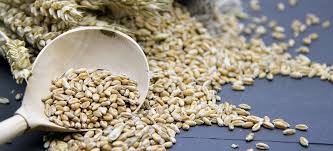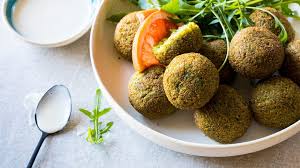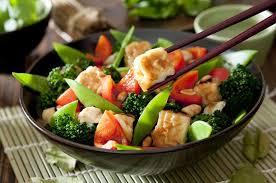Content of the Article
Tradition is an integral part of every culture. This is also the case in kitchens. Every cuisine in the world has some traditional recipes. The traditional food we will discover in our article is kimchi Yani Korean pickles.
"Which cuisine's traditional dish Kimchi is?" For those who ask, it's actually a side dish, not a dish, and it's an ancient Korean dish.
What is Kimchi, What is it Made of?
KimchiIt is a fermented dish of Korean origin. It is made with a variety of vegetables (mainly Chinese cabbage and Korean red pepper) and a variety of spices.
It originated thousands of years ago and is kimchi recipes It continues to live in Korea for generations.
It has long been known as Korea's national dish, and its popularity is growing globally.
According to historical records, in ancient times, farmers in Korea developed a storage method for the long cold winters that were difficult for agriculture.
This method - fermentation - is a way of preserving vegetables by promoting the growth of natural microorganisms. Therefore, kimchihas beneficial lactic acid bacteria that grow with the help of raw materials, namely cabbage, chilli peppers and spices.
Kimchi Nutritional Value
KimchiIts reputation is not only due to its unique taste but also to its remarkable nutritional and health profile.
It is a low-calorie food and packed with nutrients.
Chinese cabbage, one of its main ingredients, provides vitamins A and C, at least 10 different minerals and more than 34 amino acids.
Kimchi content As it varies widely, the exact nutrient profile differs. A 1 cup (150 gram) serving has approximately the following nutrient content:
Calories: 23
Carbs: 4 grams
Protein: 2 grams
Fat: less than 1 gram
Fiber: 2 grams
Sodium: 747 mg
Vitamin B6: 19% of the Daily Value (DV)
Vitamin C: 22% of the DV
Vitamin K: 55% of the DV
Folate: 20% of the DV
Iron: 21% of the DV
Niacin: 10% of the DV
Riboflavin: 24% of the DV
Many green vegetables Vitamin K and riboflavin vitamins. Kimchi It's often a great source of these nutrients, as it often contains a few green vegetables like kale, celery, and spinach.
While vitamin K plays an important role in many body functions, including bone metabolism and blood clotting, riboflavin helps energy production, cellular growth, and regulate metabolism.
What Are the Benefits of Eating Kimchi?
Promotes gut health and digestion
KimchiSince it is made by fermenting, it is beneficial to the intestine.
It has high protein, fiber, vitamins, carotenoids, glucosinolates and polyphenols, contains good lactic acid bacteria (LAB) with digestive properties.
It reduces cholesterol and prevents obesity
In humans and mice kimchi Its anti-obesity potential has been investigated. As part of a study, rats were given kimchi supplemented diet When administered, a significant reduction was observed in serum cholesterol, triglycerides, low density lipoprotein (LDL) cholesterol levels, liver and epididymal adipose tissue total cholesterol levels.
KimchiChili powder used in also is rich in capsaicin, which can also trigger fat loss in the body. It does this by stimulating the spinal nerves and activating the release of catecholamines in the body's adrenal glands.
Catecholamines then speed up body metabolism and reduce fat content.
Has anti-inflammatory properties
Kimchiis a treasure chest of phytochemicals. Indole compounds - ß-sitosterol, benzyl isothiocyanate and thiocyanate - are the main active ingredients found in it.
Kimchi makingOnion and garlic, abundant in anti-inflammatory flavonoids, especially quercetin Contains glucosides.
In addition, some types of LAB ( Lactobacillus paracasei LS2) has been shown to treat inflammatory bowel disease (IBD) and colitis. KimchiThese bacteria caused a decrease in pro-inflammatory compounds (interferons, cytokines and interleukins).
In short kimchiIBD, colitis, gastroesophageal reflux disease (GERD)can reduce the severity of inflammatory diseases such as atherosclerosis, inflammation of the intestines and diabetes.
Has anti-aging and neuroprotective properties
Studies on mice kimchihas shown that it has neuroprotective properties. It can also play an important role in delaying aging due to its antioxidant effect.
Phytochemicals (including caffeic acid, coumaric acid, ferulic acid, myricetin, glucoalysin, gluconapine and progoitrine) can eliminate reactive oxygen species (ROS) from the bloodstream. Thus, they protect neurons from ROS attack.
KimchiIts antioxidant, anti-inflammatory, lipolytic and neuroprotective properties protect the brain from aging and memory loss.
Helps strengthen immunity
Rich in probiotics, as 70 to 80 percent of the immune system is stored in the gut kimchican also help fight bacterial infections, viruses, common ailments, and serious chronic conditions. Probiotics have benefits in the treatment or prevention of:
- Diarrhea
Eczema
Irritable bowel syndrome (IBS)
Ulcerative colitis
Crohn's disease
H. pylori (cause of ulcers)
Vaginal infections
Urinary tract infections
Bladder cancer recurrence
- Clostridium difficile digestive tract infection caused
Pouchitis (a possible side effect of surgery that removes the colon)
Besides the probiotics it contains kimchiIt is full of ingredients known to stimulate healthy immune function.
Similar to the benefits of cayenne pepper, cayenne pepper powder also has anti-carcinogenic and antioxidant effects. It can help prevent food from spoiling because it contains natural antibacterial properties.
Garlic is another immune system booster that interferes with the activities of many harmful viruses, fights fatigue.
Ginger is a beneficial ingredient that helps relax the digestive organs, nourish the intestines, fight bacteria and recover faster from illness.
And finally, kale is a cruciferous vegetable that provides anti-inflammatory, antioxidant, vitamin A, vitamin C, vitamin K and other important nutrients.
Some biochemicals, including isocyanate and sulfite found in cabbage and cruciferous vegetables, are effective to help prevent cancer and detoxify heavy metals in the liver, kidney, and small intestine.
KimchiAnother benefit is the prebiotic fibers found in cabbage, radish and other components, which help improve immune function, especially in the digestive organs.
Has a high fiber content
Kimchi It is made primarily from vegetables. Vegetables provide dietary fiber that is both filling and beneficial for digestive and heart health.
Cabbage is an especially good source of fiber. It is high in volume but low in calories and carbohydrates. Individuals who consume high dietary fiber have a low risk of developing coronary heart disease, stroke, hypertension, diabetes, obesity, and certain gastrointestinal diseases.
In small quantities kimchi it can even help reach daily fiber intake.
Provides antioxidants that can help fight cancer
KimchiIt is full of anti-inflammatory foods and spices that are known to be cancer-fighting foods. It provides overall better health and longevity and slows down oxidative stress.
Garlic, ginger, radish, chilli peppers, and green onions are also high in antioxidant properties that help reduce inflammation.
Anti-inflammatory foods are important for preventing chronic diseases associated with oxidative stress, such as cancer, cognitive impairment, and coronary artery disease.
Studies show that the compound capsaicin found in cayenne pepper powder helps reduce the likelihood of developing lung cancer.
Various population studies show an association between increased consumption of garlic and a reduced risk of certain cancers, including stomach, colon, esophagus, pancreatic, and breast cancers.
Additionally, indole-3-carbinol found in cabbage has been associated with decreased intestinal inflammation and colon cancer.
What Are Kimchi Losses?
Generally, kimchi biggest security concern regarding food poisoningd.
Recently, this food has been linked to outbreaks of E. coli and norovirus.
Although fermented foods do not typically carry foodborne pathogens, kimchiIts components and the adaptability of pathogens mean it is vulnerable to foodborne diseases.
Therefore, people with weak immune systems should be careful while consuming this food.
Those who have high blood pressure due to its high salt content should also eat carefully.
How to Make Kimchi?
Large numbers in Korea and other parts of the world kimchi There is a recipe. Today, it is possible to find hundreds of different preparation methods around the world, all determined by the length of fermentation, the main vegetable ingredients, and the mix of spices used to flavor the dish.
Traditional kimchi recipeThe most common condiments on the ground include salt water, green onions, red peppers, ginger, chopped radish, shrimp or fish paste, and garlic.
You can try making it yourself at home using the simple recipe below.
Homemade Kimchi Recipe
Materials
- 1 medium purple cabbage
- 1/4 cup Himalayan or Celtic sea salt
- 1/2 cup of water
- 5-6 cloves of garlic, finely chopped
- 1 teaspoon of freshly grated ginger
- 1 teaspoon of coconut sugar
- Seafood flavor, such as 2 to 3 tablespoons fish sauce
- 1 to 5 tablespoons Korean red pepper flakes
- Korean radish or daikon radish, peeled and finely cut
- 4 fresh onions
How is it done?
- Cut the cabbage into quarters lengthwise and remove the seeds. Then slice it into thin strips.
Add the salt to the cabbage in a large bowl. Rub the salt into the cabbage with your hands until it begins to soften and water comes out.
Let the cabbage soak for 1 to 2 hours, then rinse it under water for a few minutes. In a small bowl, mix the garlic, ginger, coconut sugar and fish sauce to make a smooth paste, then add it to the bowl along with the cabbage.
Add the chopped radish, green onion and the spice mixture. Then mix all the ingredients together using your hands until they are covered. Put the mixture in a large glass jar and press until the brine covers the vegetables.
- Leave some space and air at the top of the jar (important for fermentation). Close the lid tightly and let the jar stand at room temperature for 1 to 5 days.
- Check once a day, press if necessary to keep vegetables under liquid brine. After a few days, taste it to see if it's sour on demand.














